Village History

Figure 1 Shelter Rock – Village of North Hills Archives
The Village of North Hills is a suburban community located on Long Island in Nassau County, New York. In 1927 a movement to start the Village of North Hills began. This history, however, began long before that event. Long Island is the result of a large glacial movement that started in Northern Canada and ended here on Long Island. The topography of our area, rugged terrain, and steep shorelines are the result of the final boundary and subsequent melting of the glaciers. The Shelter Rock, located on Shelter Rock Road, was left as evidence of this event. By the end of World War 1, it was the most photographed rock formation in the United States. Located on the John Hay Whitney property, many legends have been told of this rock. One time known as Millstone Rock; children were told tales of treasure being buried there.
This rock is the largest glacial boulder on Long Island. It is about 54′ x 40′ x 16′ in size. It weighs about 2,600 tons. Noted archeologists have found the site of Shelter Rock to be a favorite Native American habitat many years ago. Numerous Native American arrowheads, pot shards, and other artifacts were found below the ground. The Matinecock Native Americans were located in this area at the time of the first settlements of Long Island. Where the Native Americans settled, woods were burned to clear land. One Matinecock Village was located near the southern end of North Hills.
In 1643 Robert Fordham and John Carman, religious leaders from Connecticut, purchased all the land now known as North Hempstead. The settlers built a fence across the base of Manhasset Neck. The north side was for a cow pasture, and the south was for farming.
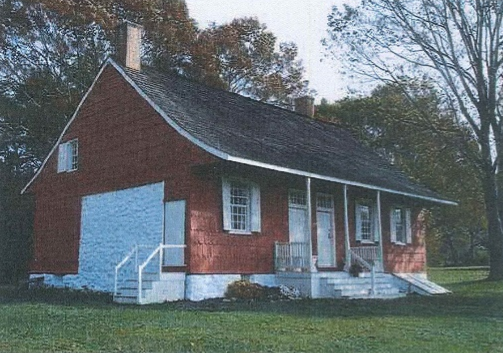
Figure 2 The Schenck House – Photo – From Review – A Long Island Time Machine – Old Bethpage Village Restoration
The colonial period saw European settlers, primarily of English and Dutch descent, establish farming communities around Long Island, including what is now North Hills. Agriculture was the primary economic activity during this time, with farms producing crops such as wheat, corn, and potatoes. One noted farm was the Schenck farm, part of the northern section of North Hills. The house was built about 1685 and was located on Shelter Rock Road just south of Northern Boulevard. The house was later moved to Old Bethpage Village Restoration.

Figure 3 – Farm of Isaac Underhill Willets -Photo Village of North Hills Archives
Another farmhouse built before the revolution was the home of Thomas Smith which was remodeled in 1860. From 1848 to 1898 the house was the farm of Isaac Underhill Willets. I.U. Willets was a large landowner for whom I. U. Willets Road was named. This home would later become the clubhouse for the Links Golf Course. This property is now The Links at North Hills residential community.
At the turn of the 20th Century, about a dozen families acquired large holdings in our area. A new era of large estates in North Hills began and would remain until the 1970’s. At this time, there were properties owned by the Vanderbilts, the Pulitzers, and the Whitneys.
William Singer of the Singer Sewing Machine Company built a federal-style estate in 1906. William Sheehan subsequently purchased the estate and called it “The Height” because it was located at a high point in Nassau County. Sheehan later sold the property to Robert Elbert, who together with his wife Marion, began acquiring many of the large estates along Shelter Rock Road and Searingtown Road. Joseph Peter Grace, II, the grandson of W.R. Grace, purchased the property from Roger Elbert and named the mansion Gracefield. The mansion is currently used as a clubhouse for those who live in the Gracewood Community.

Figure 4 Gracefield – Photo – Gracewood at North Hills

Figure 5 Gracefield – Photo – Gracewood at North Hills

Figure 6 – Strathmore Vanderbilt County Club – Photo – A Little Bit of Heaven -The Manhasset Press
In 1914, William Chester sold a French Chateau to Louis Sherry who redecorated the house to resemble the Petite Trianon, a cottage of Marie Antoinette at Versailles. This home is currently the clubhouse for the Strathmore Vanderbilt Country Club.

Figure 7 Tullaroan – Photo – American Architect & Architecture, 1913
In 1924, William K. Vanderbilt created a private golf course on his summer estate, Deepdale, located in Lake Success. In 1954, the Long Island Expressway was routed through the northern part of the course. The Deepdale Club purchased the W.R. Grace estate and relocated the golf course to its current location. The Grace mansion, Tullaroan, serves as the current clubhouse for the Golf course.

Figure 8 Dorwood/Sunny Skies – Photo – Old Long Island
Dorwood, built in 1927 for Victor Emmanuel of the Italian Royal Family, was designed by John Stewart Barney. The house was sold to Cornelius Kelley who renamed the estate Sunny Skies. In 1958, Joseph Peter Grace, II purchased the house and outbuildings and donated the property to the Sisters of the Immaculate Heart. This home is now the Our Lady of Grace Convent.
As roads were built, North Hills boundaries were established. The land east of Searingtown Road is now Christopher Morley Park and High Point condominiums. They were formerly the estates of Thomas F. Ryan, Assistant Secretary of War under Wilson and Louise Grace. What was once the Fred W. Allen estate and part of the adjacent Edward W. Harkness estate have now become part of the North Hills Country Club property.

Figure 9 Northcourt – Photo American Country Homes of Today, 1928
In 1927, the landowners were mindful of the development of the surrounding area and decided to incorporate to preserve the large estates. The first meeting of the Trustees was held on September 26th, 1929 at the home of Joseph P. Grace II (now Deepdale Country Club). Lawrence Hobart Shearman, a prominent lawyer, was the first mayor. His home, Northcourt, is now Buckley Country Day School. The other trustees at the time of incorporation were Roger C. Elbert, Joseph P. Grace II, Nicolas F. Brady, and Fredric W. Allen.
North Hills embodied the “Gold Coast” of Long Island. The beautiful estates and golf courses made the village a noted address of many prominent families.
North Hills has had fifteen Mayors since 1929. The Village had offices at 3333 New Hyde Park Road and One Hollow Lane. Village Hall was constructed in 1986 at its current location, One Shelter Rock Road. Before having a Village Hall, meetings were held at The Links Golf Club, Buckley Country Day School, Mayor Vincent DeRoulet’s home, and Shelter Rock Elementary School. Village Hall was renamed John M. Lentini Village Hall on February 25, 2003.

Figure 10 Village Hall 1986

Figure 11 Village Hall 1986
The decades of the 70s, 80s, and 90s saw rapid growth and development in the Village of North Hills. The Gates at North Hills was the first condominium development built during this time.
Today North Hills is known for its upscale residential neighborhoods, golf courses, and proximity to shopping centers and recreational amenities. It remains a beautiful, picturesque, and wonderful community for residents to live in.
VILLAGE OF NORTH HILLS MAYORS
| YEARS | NAME |
| 1929-1931 | Lawrence H. Shearman |
| 1931-1939 | Malcolm P. Aldrich |
| 1939-1942 | Henry M. Minton |
| 6/1942-9/1942 | Edward J Dimock |
| 9/1942 – 1947 | Francis Ward |
| 1947-1953 | Henry M. Minton |
| 1953- 1959 | Robert Boggs |
| 1959-1961 | Robert E. Blum |
| 1961-10/4/1973 | Vincent De Roulet |
| 10/4/1973-1977 | Joseph Peter Grace, II |
| 1977-1978 | Frank Martucci |
| 1978-1991 | Lowell H. Kane |
| 1991- 2002 | John M. Lentini |
| 2002-2003 | Stanley Rosenfeld |
| 2003 – present | Marvin Natiss |
VILLAGE MAPS
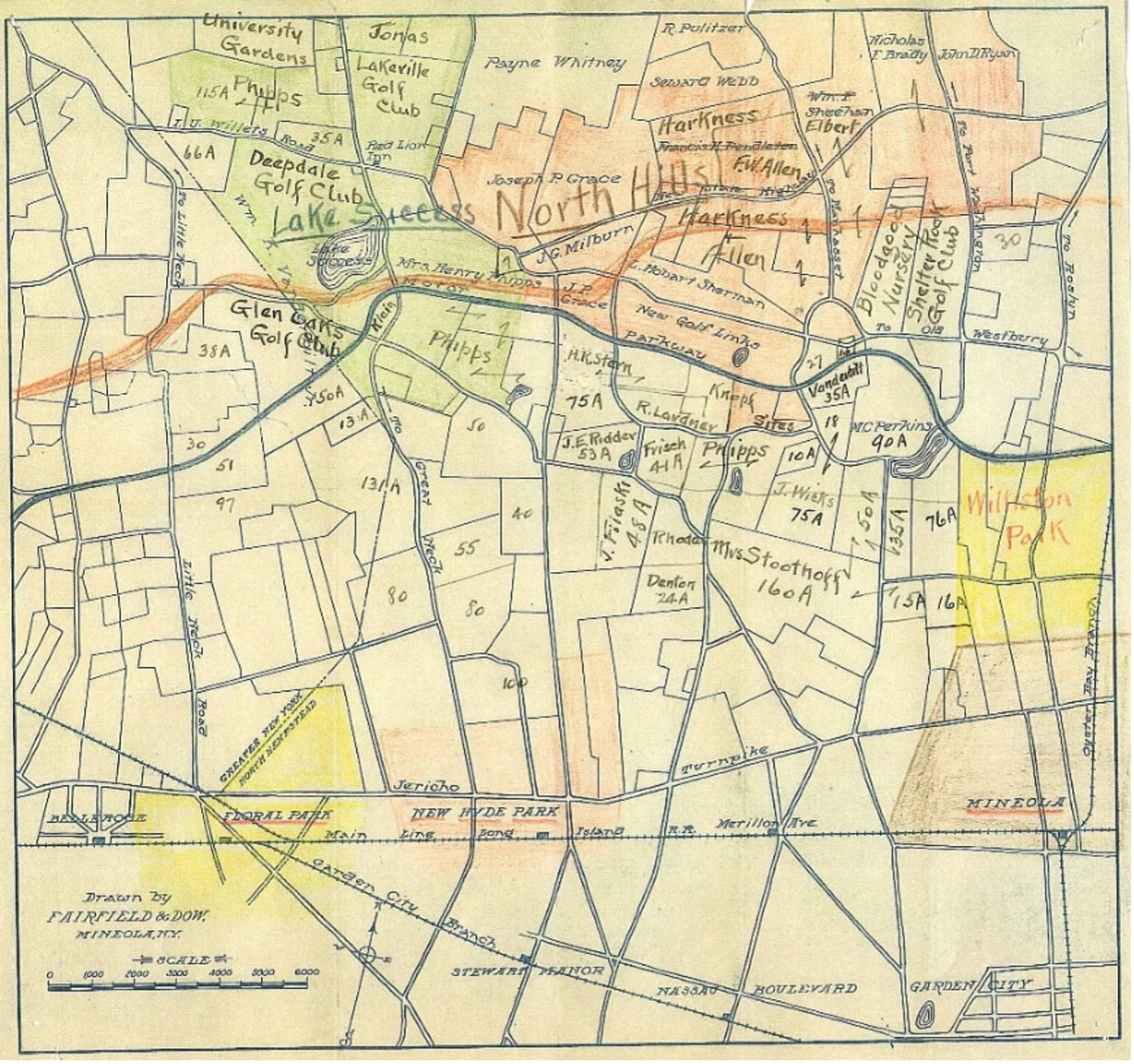
Figure 12 – Area Map – undated
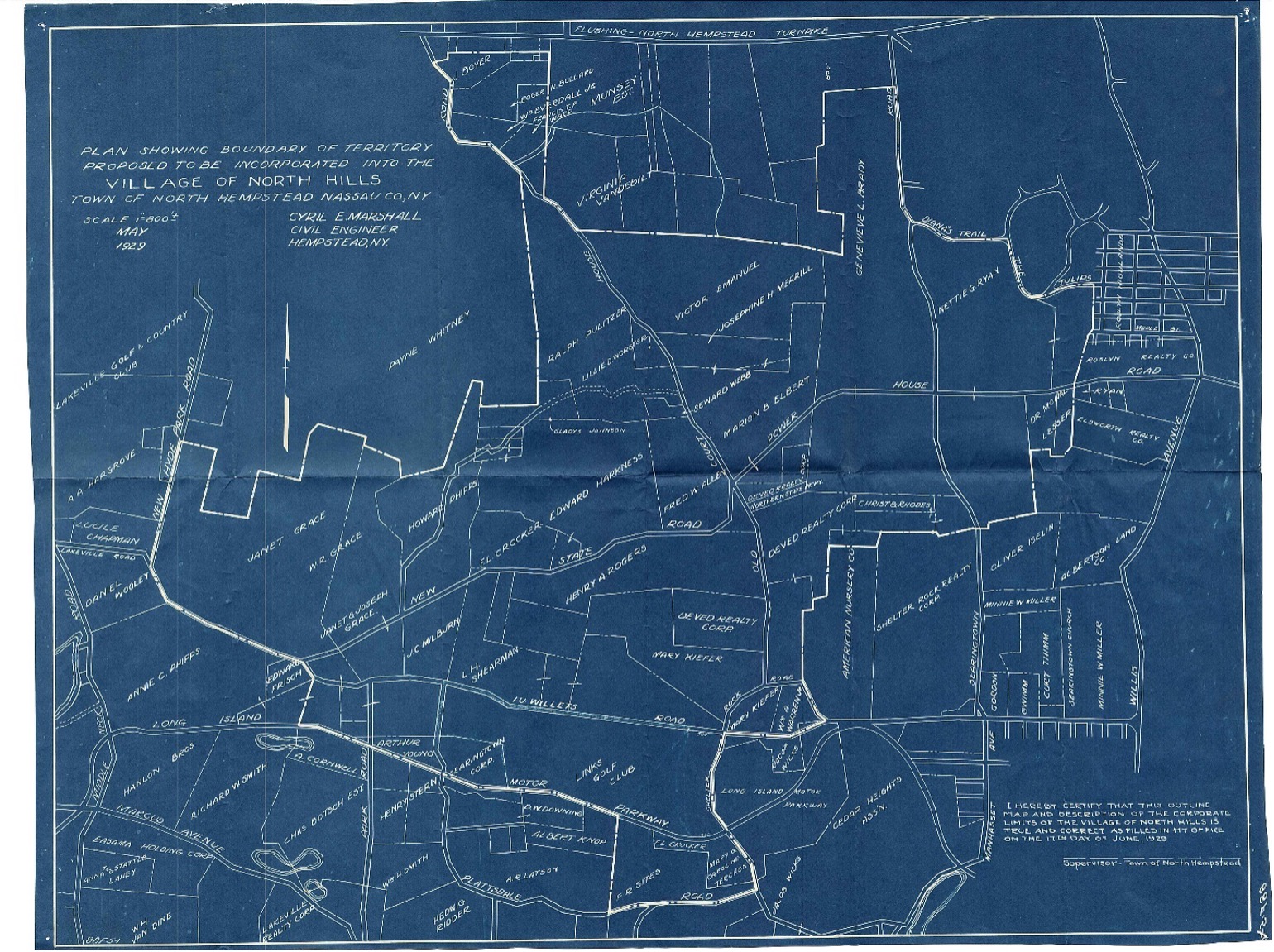
Figure 13 – June 1929 Village Map
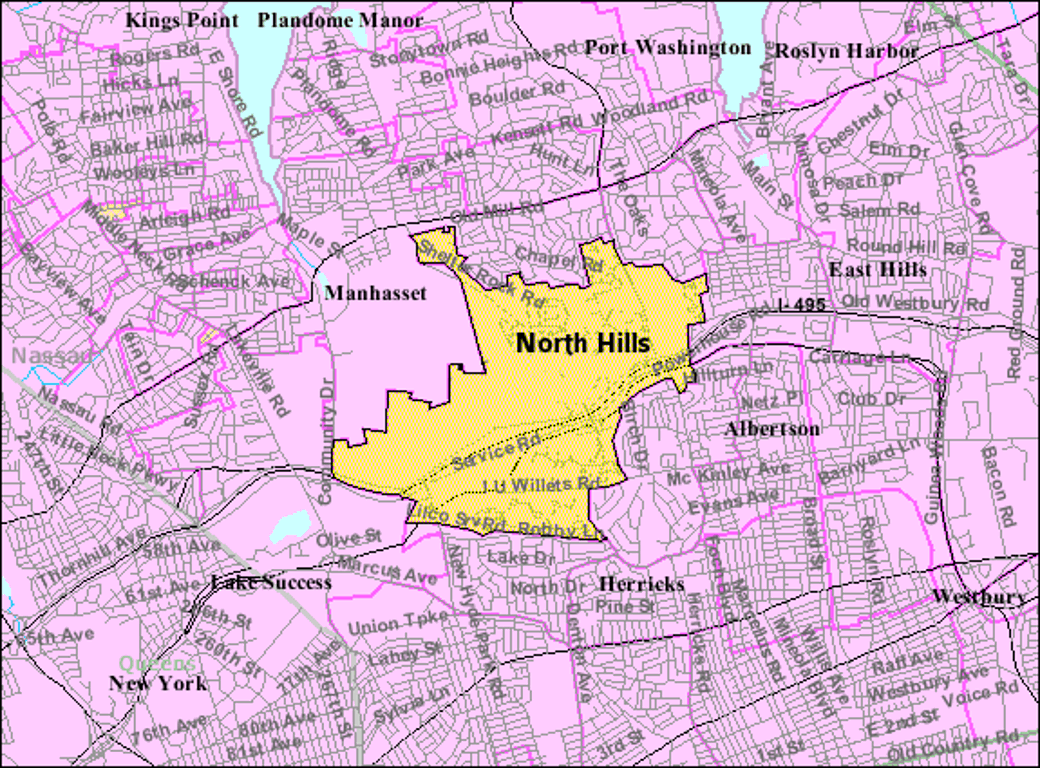
Figure 14 – Area map – undated
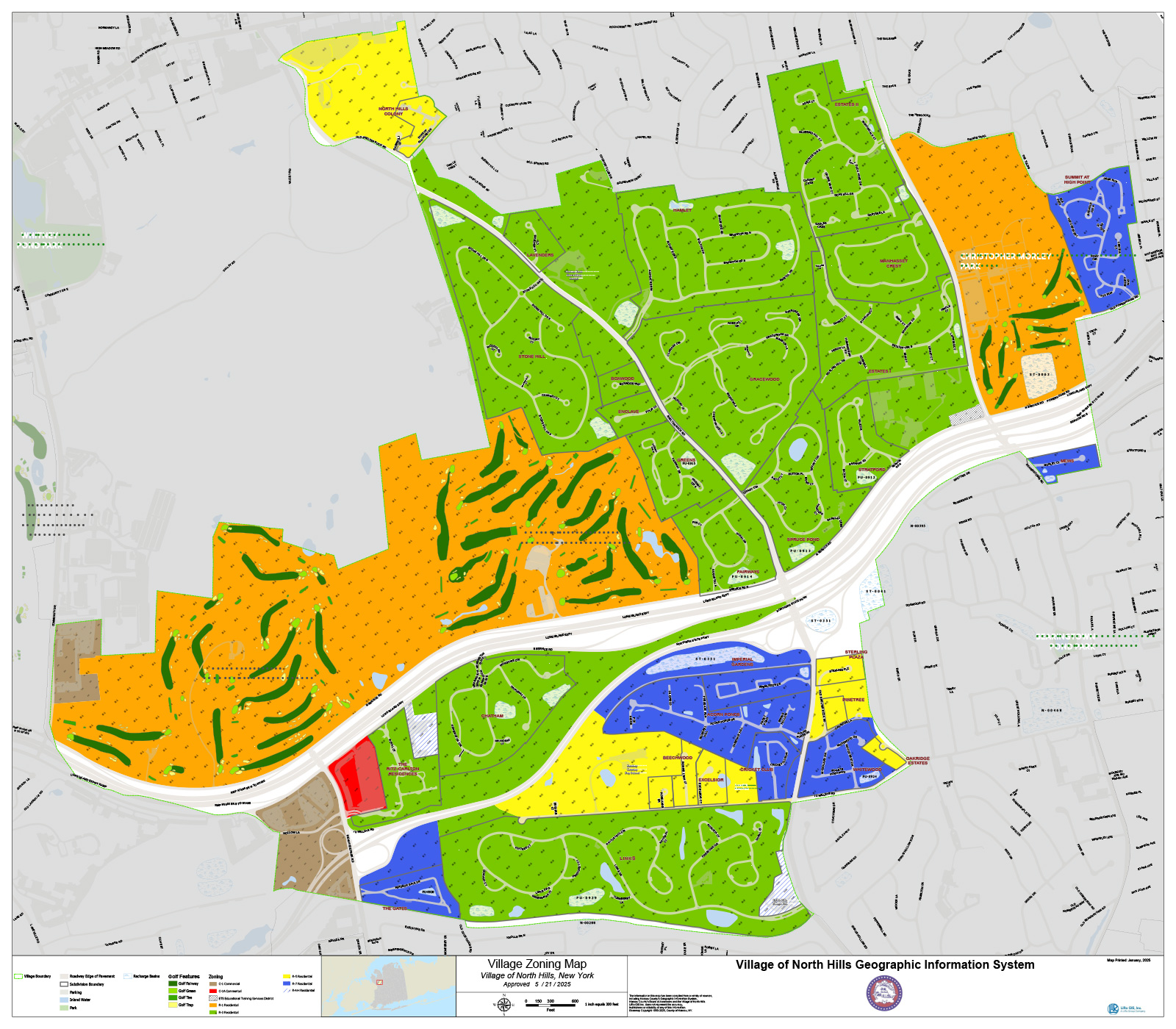
Figure 15 – North Hills Zoning Map
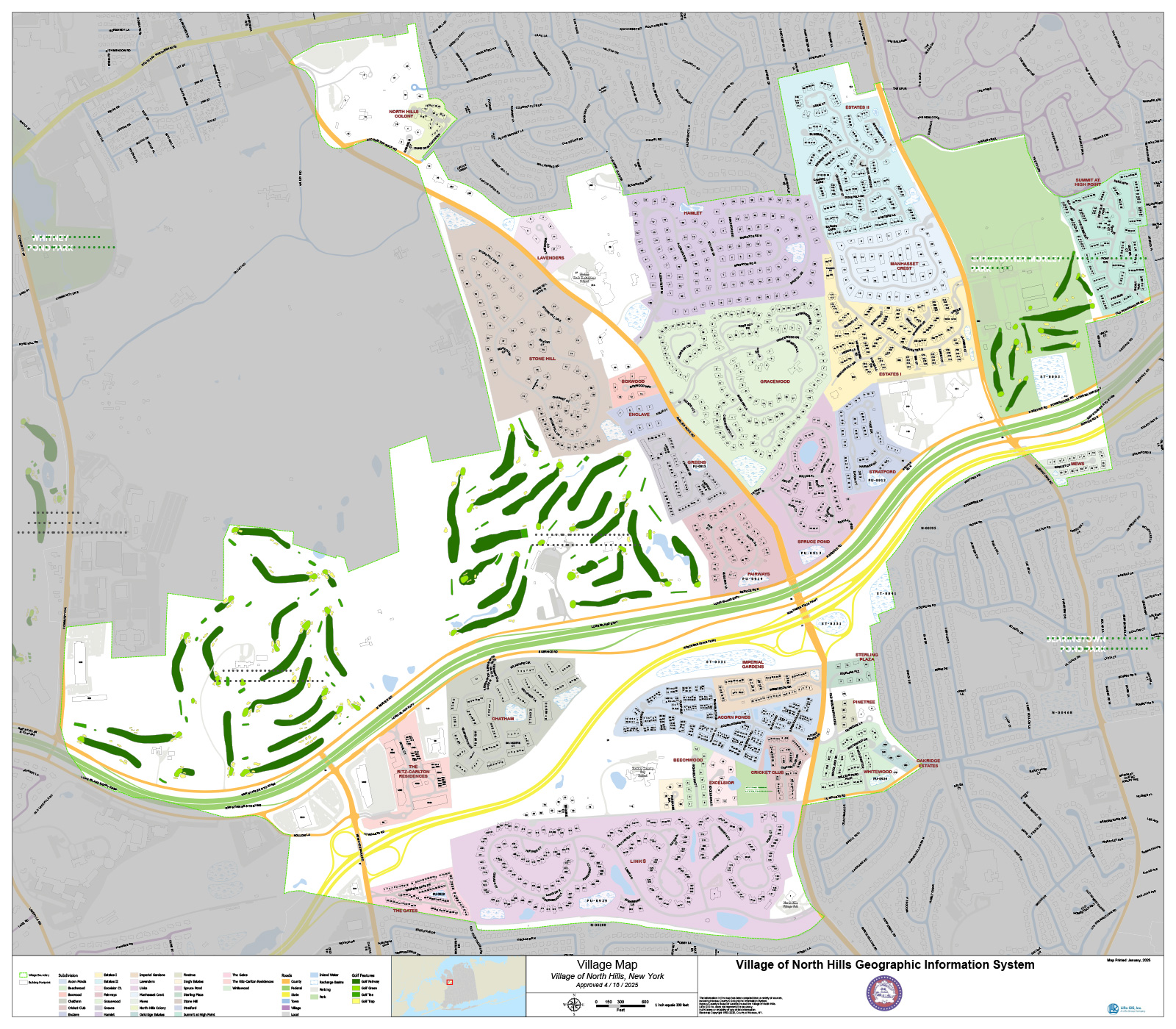
Figure 16 – North Hills GIS Map
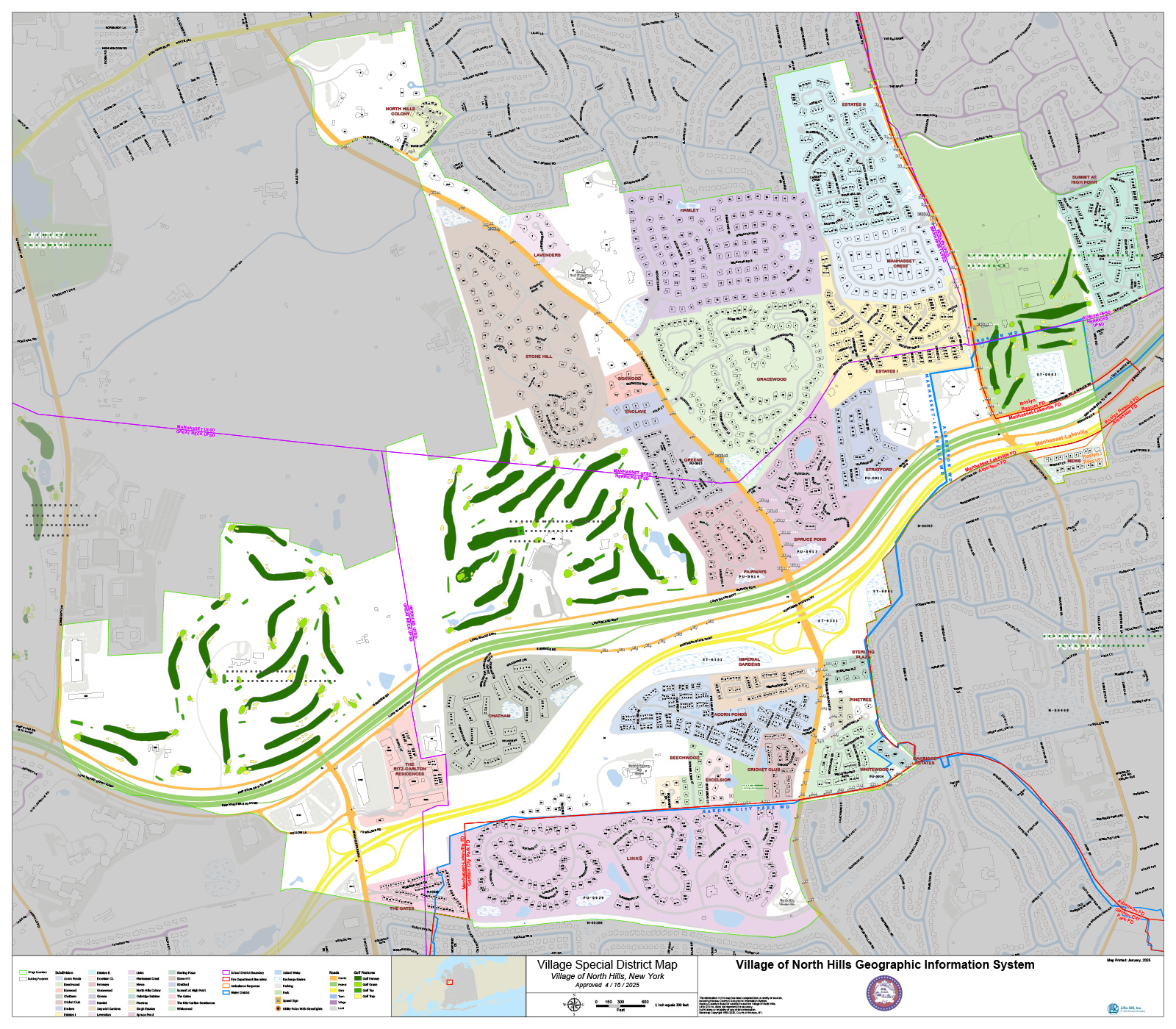
Figure 17 – North Hills Special District Map
